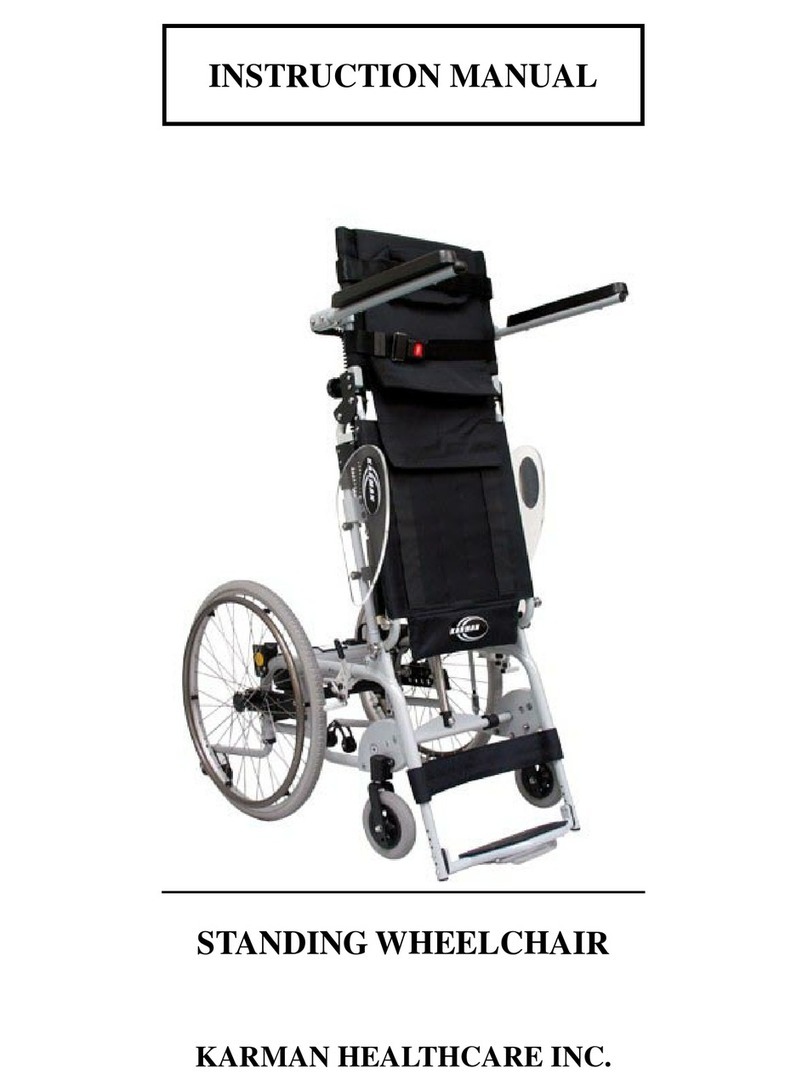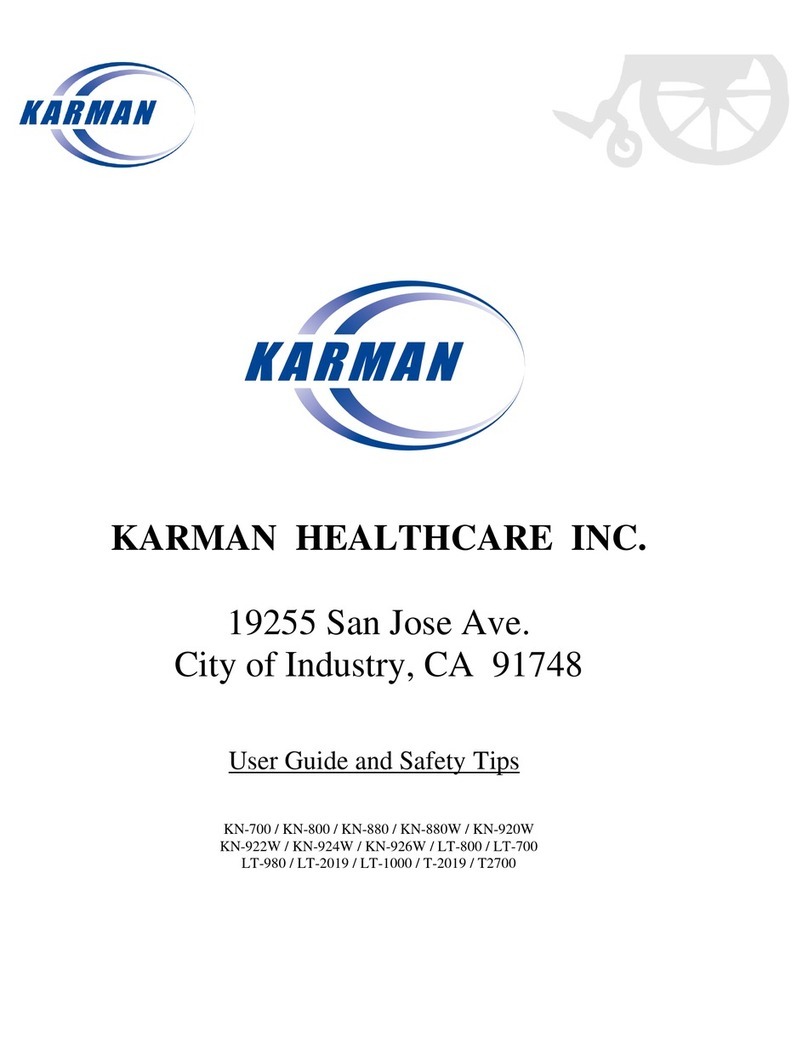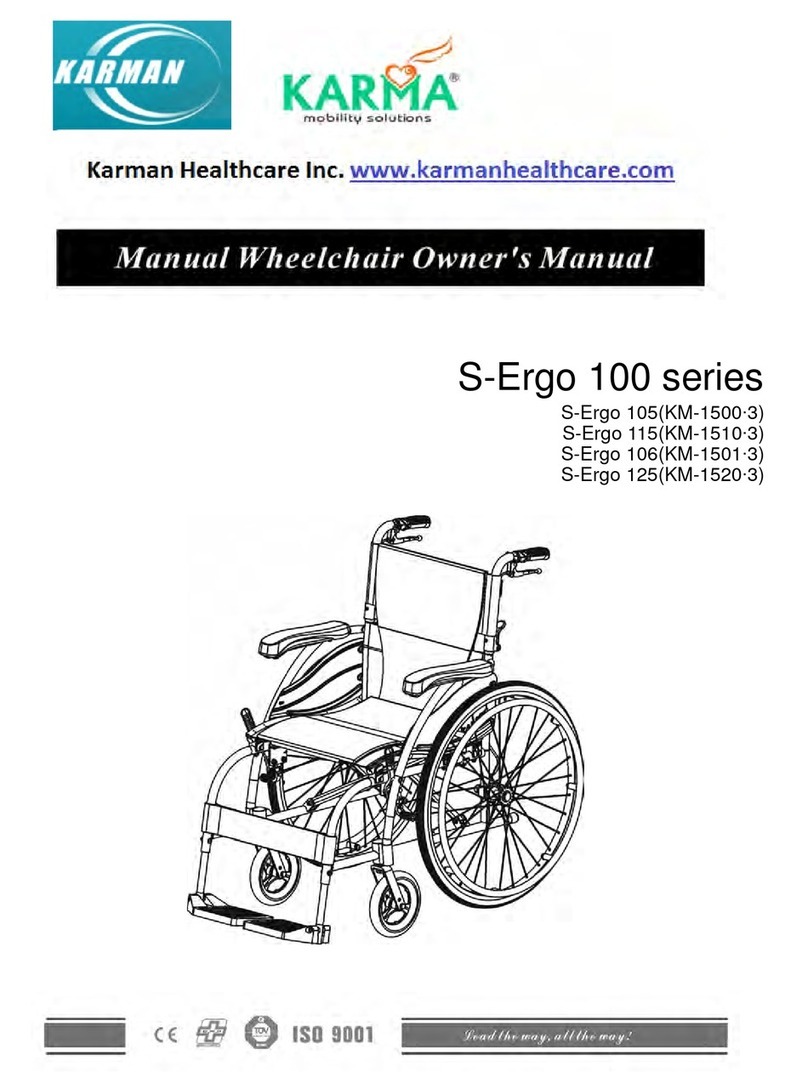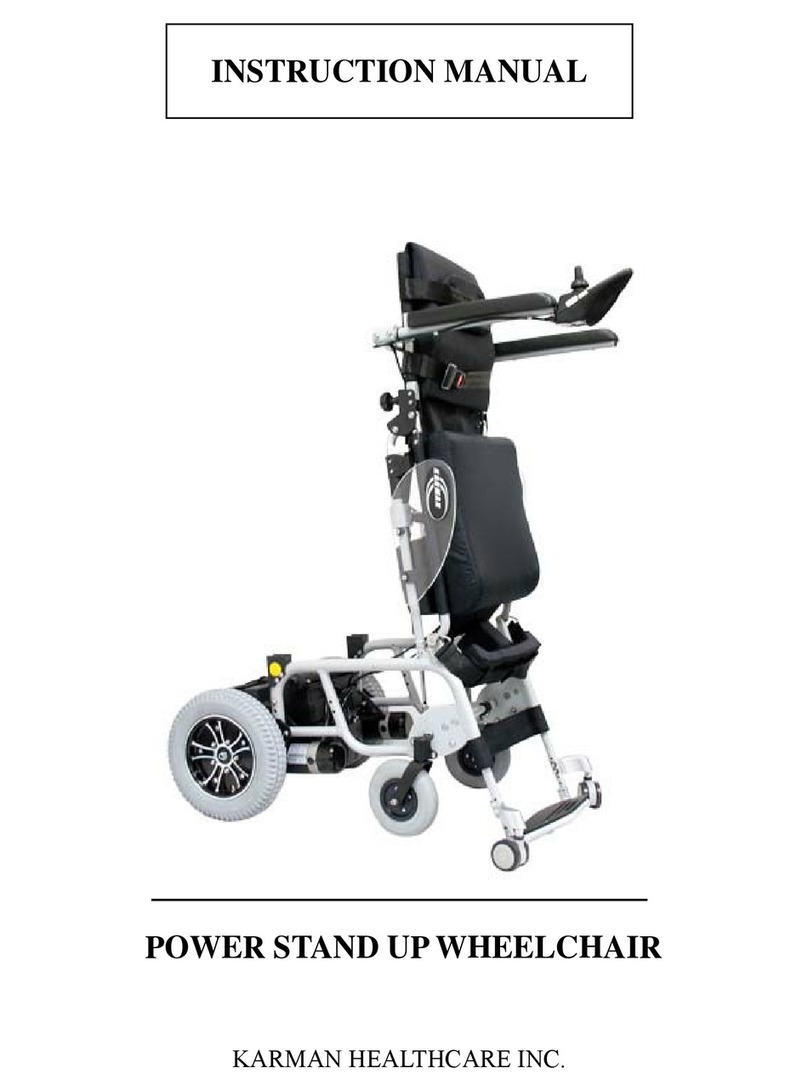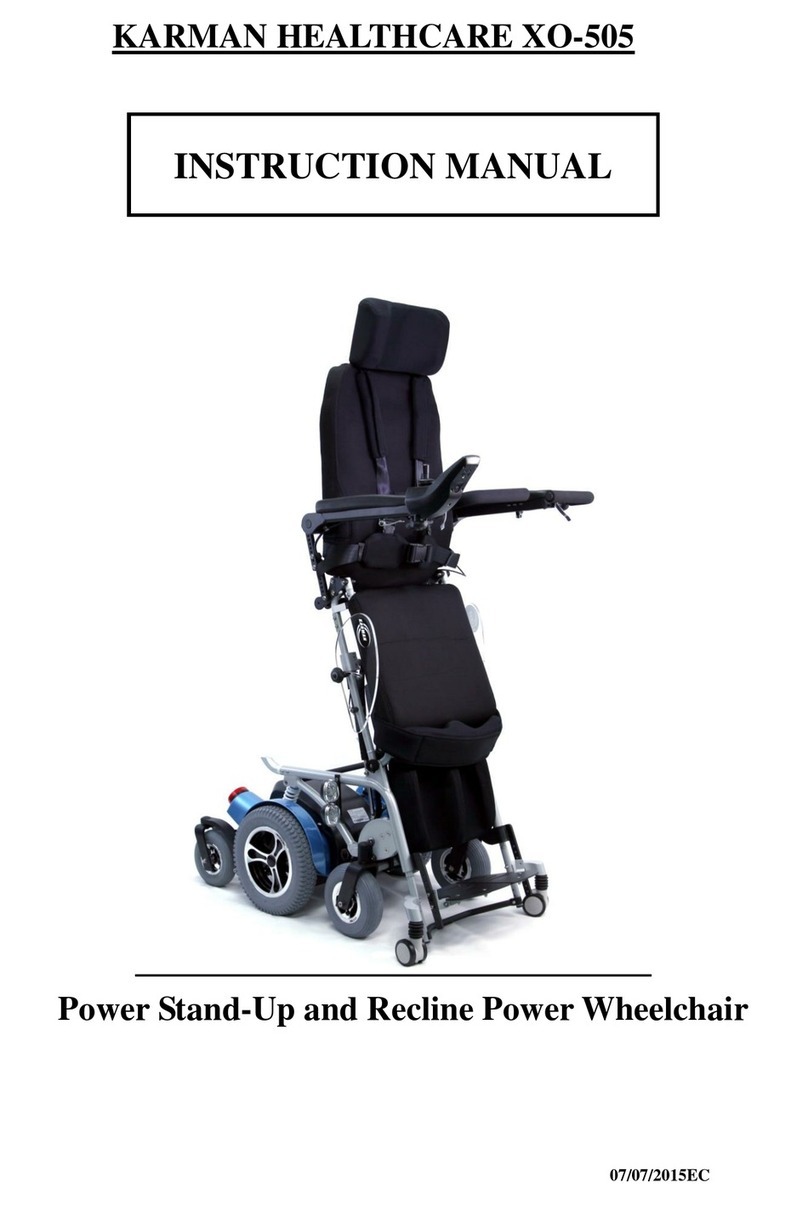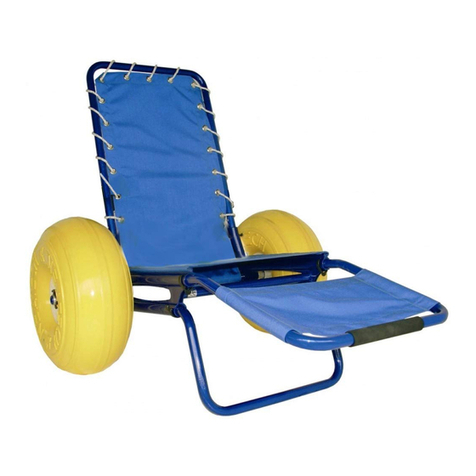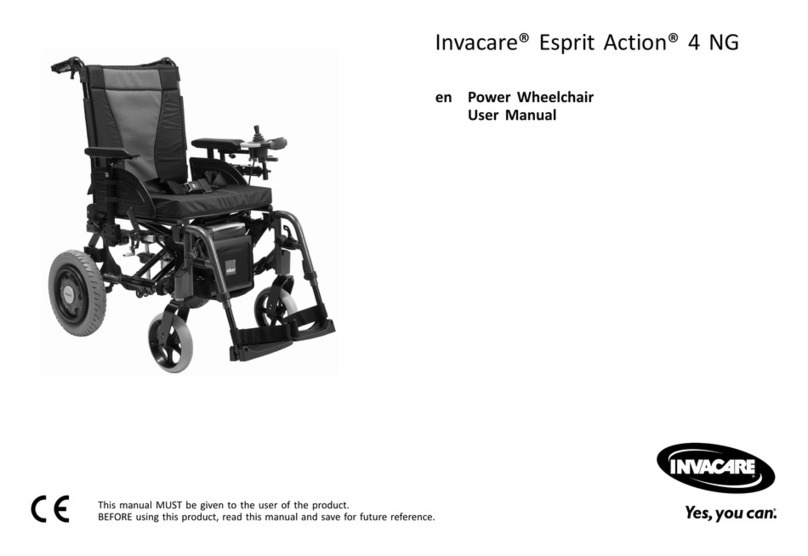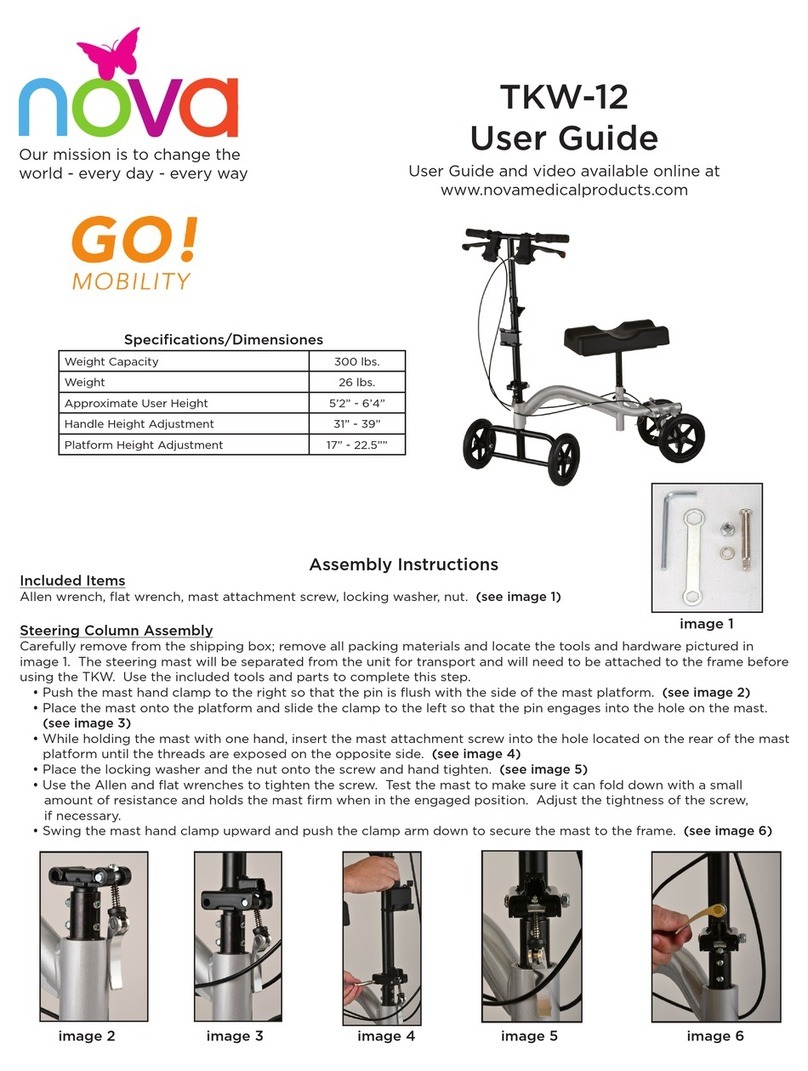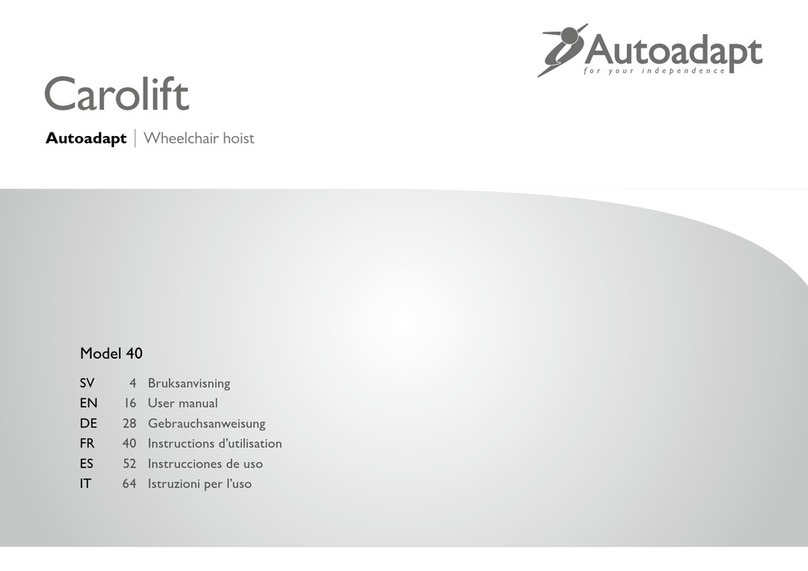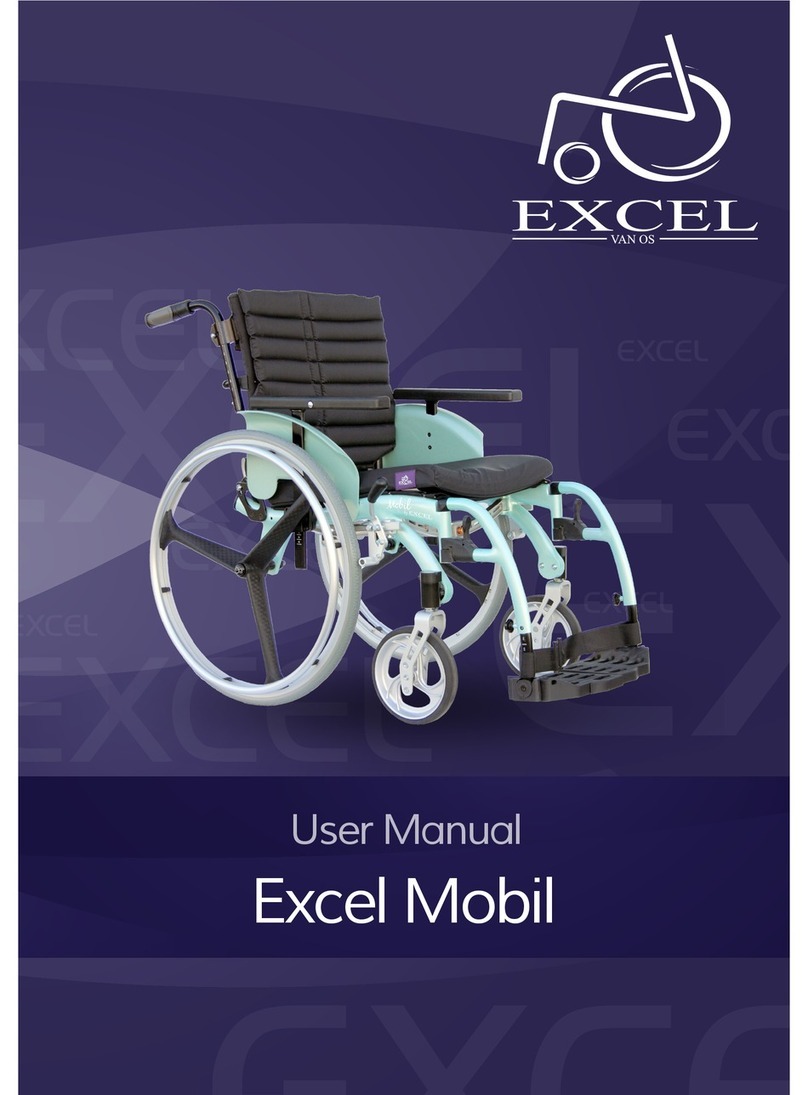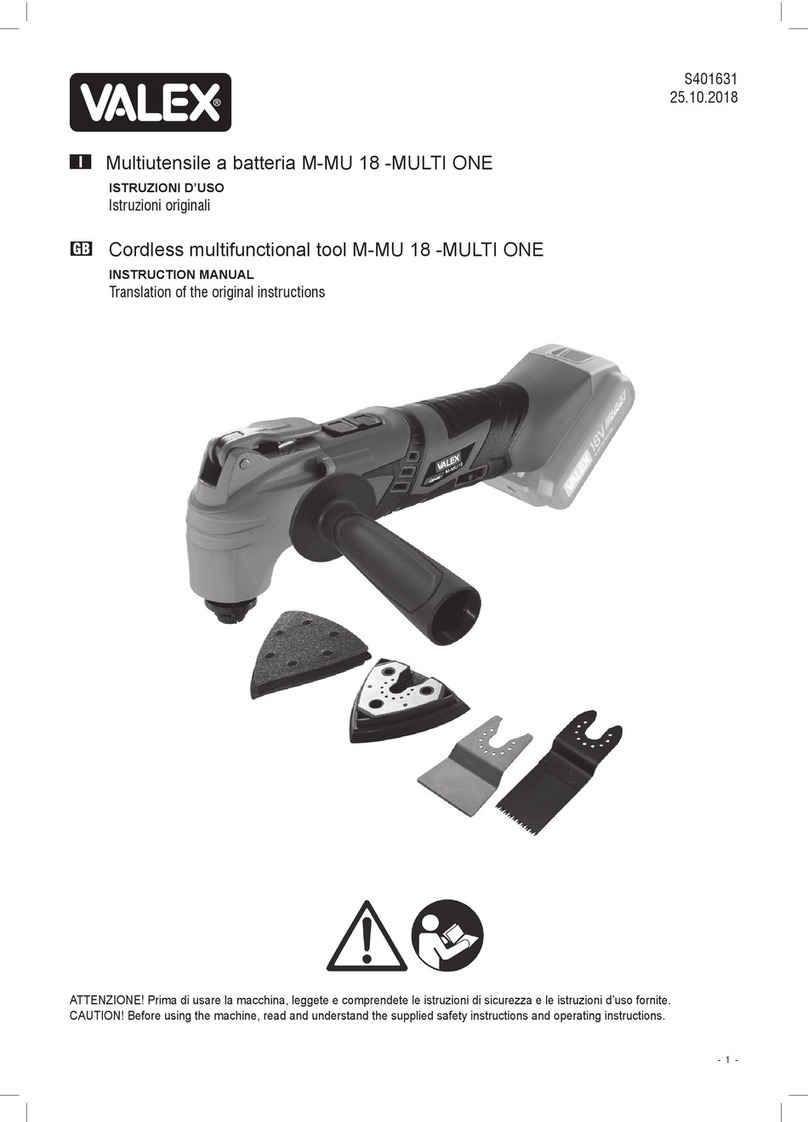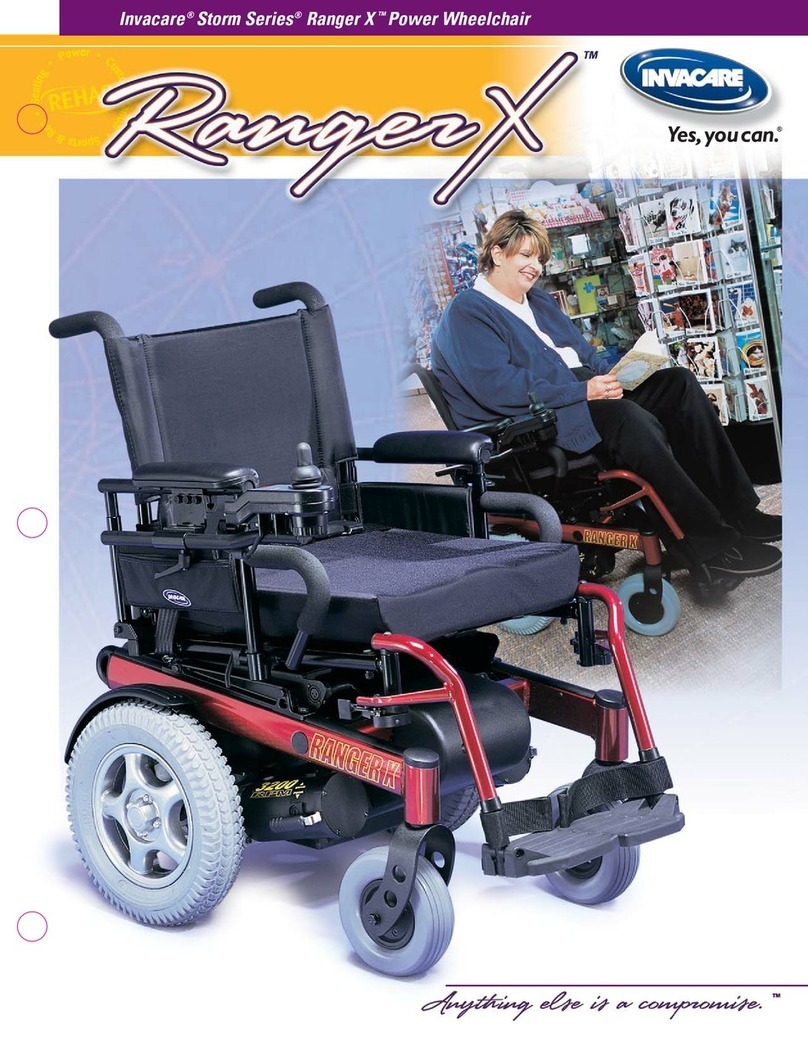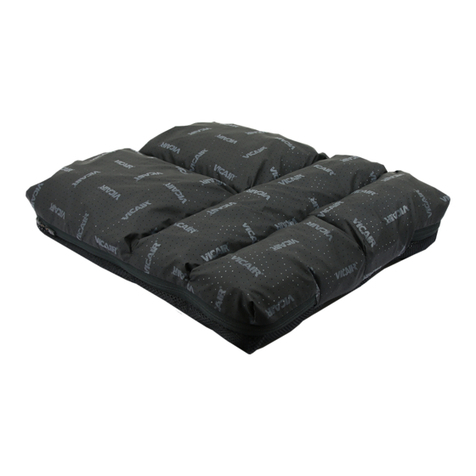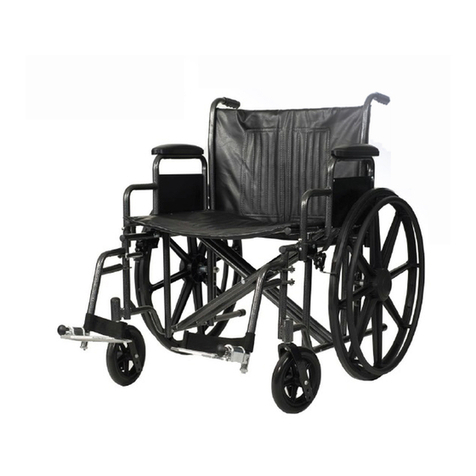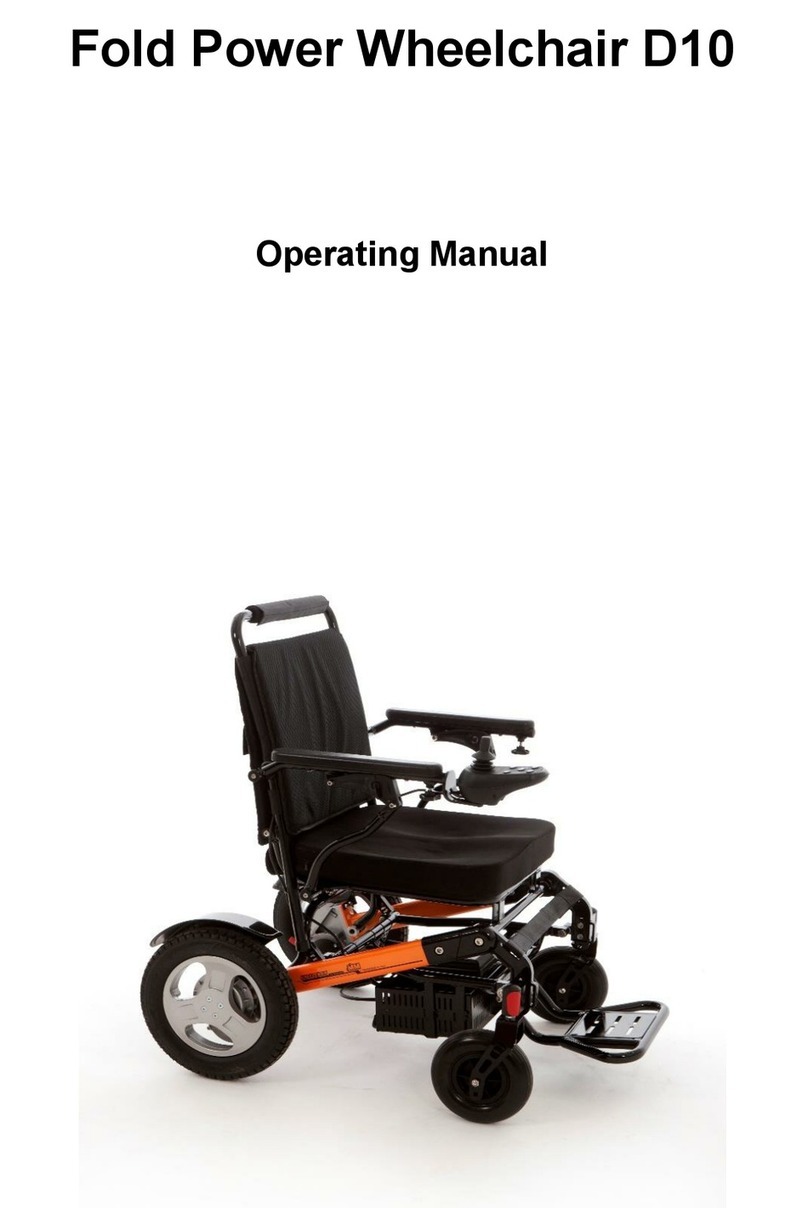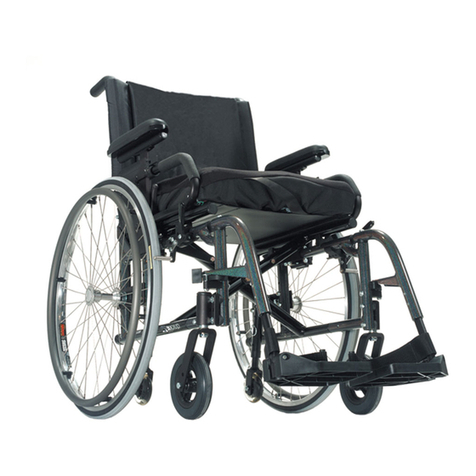GENERAL WARNING
!DO maintain your chair, particularly, check the tire pressure since this affects
the efficiency of the brakes.
!DO make sure both brakes are applied before getting in or out of the chair.
!DO make sure both brakes are applied when the chair is not being pushed or
used.
!DO pay special attention when climbing curbs or turning on slopes.
!DO avoid steep or uneven surfaces that may cause the chair to tip over.
!DO avoid soft surfaces as the casters may become bogged down.
!DO travel smoothly under all conditions.
!DO look ahead to anticipate hazards such as furniture, doors, and potholes,
etc.
!DO make sure that both feet are safe on the footrests and that clothing is
safely tucked out of the way so that it cannot get caught in the wheels.
!DO take care when traveling up or down or across inclines.
!DO keep both hands on the push handles to control the chair, if you are the
attendant.
!DO pay attention to keep the chair balanced.
!DO check the frame and components regularly and refer to this user guide
during and after the warranty period.
!DO tie-up the upholstery or replace which with a new one when it becomes
loose.
!DO lubricate bearings regularly.
!DO equip with anti-tippers to avoid falling backwards.
!DO equip with a seat belt designed for disabled people.
!DO equip with "ankle supports" for disabled people.
!DO clean both hands after oiling the wheelchair.
!DO tighten the screws of headrest tubes.
!DO NOT overload the chair in any circumstance.
!DO NOT hang anything heavy on the back of the chair that could cause the
chair to become unstable, particularly when negotiating inclines.
!DO NOT allow more than one user at a time.
!DO NOT use with an unconscious patient.
!DO NOT use other transport to pull the wheelchair.
!DO NOT do "wheelies", as you my fall or tip over backwards and suffer a
severe injury.
!DO NOT sit in the wheelchair within a moving vehicle unless it has been
affixed the labels of hook mark.
!DO NOT go too fast or turn too quickly.
!DO NOT stand on the footplates when getting in or out of the chair.
!DO NOT go down steps forward, whether solo or with an attendant.
!DO NOT attempt to lift the wheelchair by any removable (detachable) parts.
Lifting by means of any removable (detachable) parts of the wheelchair may
result in injury to the user and/or assistant or damage to the wheelchair.
!DO NOT use the wheelchair when the back is folded. This alters the centre
of gravity and may cause the wheelchair to tip backwards. The back should
only be folded for storage or transport of the wheelchair.
!DO NOT hang anything on the back joint that could cause the backrest
folding suddenly and may cause injury.
